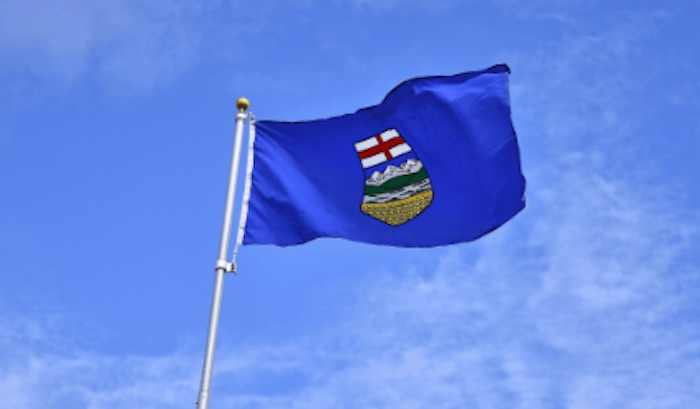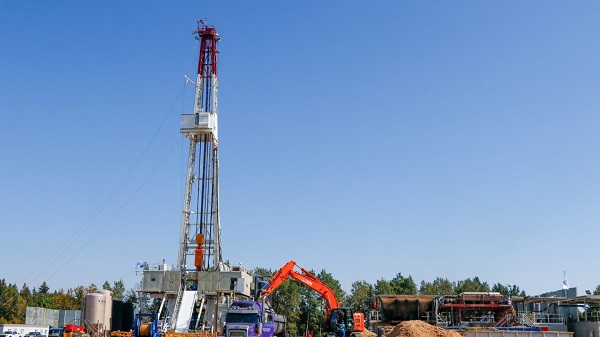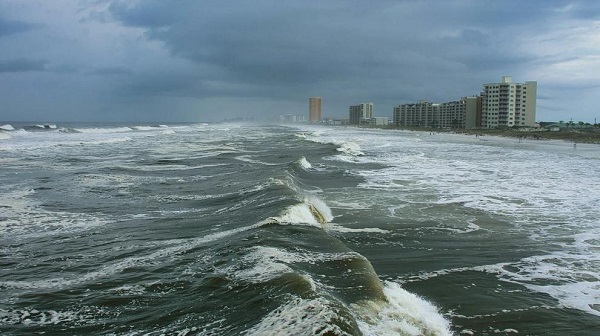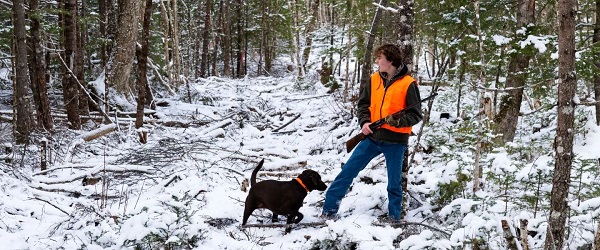Alberta
Alberta announces 11.6 billion surplus

Strong year-end positions Alberta for stability
A solid end to 2022-23 secures Alberta’s long-term financial outlook and provides stability against future economic uncertainty.
Alberta ended the fiscal year with an $11.6-billion surplus, exceeding the Budget 2022 projected surplus by $11.1 billion. In 2022-23, the province paid down $13.3 billion in debt, eliminating an estimated $260 million in debt servicing costs annually and reducing the overall debt burden on Albertans.
The province’s strong financial situation also resulted in the market value of the Alberta Heritage Savings Trust Fund growing by $2.5 billion to $21.2 billion. The Heritage Fund’s year-over-year growth was primarily due to actions taken by the Alberta government to retain $1.25 billion in net investment income from 2021-22 and deposit $753 million into the fund.
Growing the Heritage Fund benefits current and future generations of Albertans by ensuring the province is well equipped to handle future uncertainty.
In March of this year, Alberta’s government made legislative changes to ensure the fund continues to grow to support Albertans now and in the future. These changes allow the government to retain all investment income within the Heritage Fund instead of it being transferred to general revenue.
“The 2022-23 year-end report is a very positive one. We promised to keep our economy moving forward and Alberta is reaping the benefits. Albertans can rest easy knowing that Alberta’s prosperity today means more stability tomorrow as we continue to pay down debt and save for the future.”
Alberta’s government remains committed to responsible financial management. For the current and subsequent years, Alberta’s new legislated fiscal framework will continue to address Alberta’s unique economic and revenue volatility. The framework requires government to put at least half of any surplus toward debt repayment, with the remainder going toward additional debt repayment, the Heritage Fund or one-time initiatives that do not permanently increase government spending.
Revenue
Revenue in 2022-23 was $76.1 billion, $13.5 billion more than estimated in Budget 2022, including:
- $25.2 billion in non-renewable resource revenue, $11.4 billion more than estimated in Budget 2022.
- $26.5 billion in tax revenue, $3.5 billion higher than estimated in Budget 2022. This included:
- $8.2 billion in corporate income tax, $4.1 billion more than estimated in Budget 2022.
- $13.9 billion in personal income tax, $543 million more than estimated in Budget 2022.
At the time the Budget 2022 forecast was developed, the global economy was experiencing significant uncertainty related to COVID-19, global growth and energy demand. Budget 2022 was based on a West Texas Intermediate (WTI) forecast of US$70 per barrel in 2022-23.
Oil prices surged last year due to many global factors. WTI reached US$120 per barrel in June 2022 and averaged US$89.69 for the 2022-23 fiscal year, a large reason for the increase in resource and corporate income tax revenue.
Expense
Expense in 2022-23 was $64.5 billion, $2.4 billion more than estimated in Budget 2022, including:
- $25.2 billion in health expense to expand capacity and for higher costs in response to Albertans’ evolving health-care needs.
- Investments of $8.9 billion and $6.1 billion in K-12 and post-secondary education, respectively, providing quality learning for Alberta’s youth and building on the province’s world-class post-secondary environment.
Among other factors, the overall increase from Budget 2022 was due to:
- A $2.2-billion increase in operating expense, mainly for health, increased compensation costs from settled agreements, electricity rebates and other affordability measures, and the cost of selling oil.
- A $300-million increase in COVID-19 recovery costs.
- A $167-million increase in debt servicing costs, mainly due to the impact of higher interest rates.
Affordability
In response to rising living costs, Alberta’s government introduced a series of affordability measures in 2022-23 that helped slow inflation and make life more affordable for Albertans. In 2022-23, the government provided $2.9 billion in affordability supports, including:
- $1.1 billion for the fuel tax relief program, funded through a reduction in revenue.
- $304 million for indexation of the personal income tax system to inflation retroactive to the 2022 tax year, funded through a reduction in revenue.
- $644 million for electricity rebates.
- $441 million for affordability payments to eligible seniors, families with children and vulnerable Albertans on core benefits programs.
- $51 million for indexation of benefit payments to inflation (Alberta Seniors Benefit, Assured Income for the Severely Handicapped, Income Support, Persons with Developmental Disabilities).
To further reduce the cost burden on Albertans, Alberta’s government recently extended the pause on the collection of the provincial fuel tax, saving Albertans 13 cents on every litre of gasoline and diesel until the end of 2023.
Alberta
Carney’s pipeline deal hits a wall in B.C.

This article supplied by Troy Media.
Carney’s attempt to ease Canada’s dependence on the U.S. stirs a backlash in B.C., raises Indigenous concerns and rattles his own party
The Memorandum of Understanding (MOU) between Prime Minister Mark Carney and Alberta Premier Danielle Smith has opened a political hornet’s nest, exposing deep divisions within the Liberal Party and forcing a national debate that has been avoided for years.
Carney was under mounting pressure to respond to U.S. tariffs that threaten to carve billions out of Canada’s economy. The United States buys more than 95 per cent of Canada’s oil exports, leaving the country highly exposed to U.S. policy decisions. That pressure is now driving his push for a route to the Pacific, a project that could change Canada’s economic future but also destabilize his already fragile minority government.
Carney knows the political risk. His government could fall at any time, which only raises the stakes. Even so, he has pressed ahead. The agreement with Alberta lays early groundwork for a new pipeline to the Pacific. It would expand the oil sands, ease some environmental obligations and revive a proposal industry leaders have pushed for years.
The route is far from settled, but it is expected to run to B.C.’s northern coast and open access to Asian buyers. A Pacific route would finally give Canada a direct path into Asian energy markets, where demand remains strong and prices are often higher than in the United States.
If Carney expected broad support, he did not get it, especially in British Columbia. Because B.C. is the only province with a deep-water port capable of handling large crude carriers, it is the only path a west-coast pipeline can take. The province is now the central battleground, and whether the project succeeds will depend on what happens there.
B.C. Premier David Eby criticized the lack of consultation. “It would have been good for B.C. to be at the table,” he said, warning that the project risks undermining Indigenous support for the province’s liquefied natural gas plans. He also noted that the pipeline has no private backer and no commitments from First Nations, two obstacles that have tripped up projects before.
The backlash quickly spread to Ottawa. Steven Guilbeault, the former environment minister and the most prominent environmentalist ever to serve in a federal cabinet, resigned from cabinet in direct response to the MOU. He said the proposed pipeline “would have major environmental impacts”. Green Party Leader Elizabeth May said his departure “dashes the last hope that Mark Carney is going to have a good climate record ever.”
Several B.C. Liberal MPs echoed concerns about the political cost. CBC News reported anger inside the caucus, with some MPs “seething” over the agreement and worried about losing climate-focused voters.
The voters those MPs fear may not be as opposed as they think. An October Angus Reid Institute survey found that a solid majority of Canadians support a pipeline from northern Alberta to the northwest B.C. coast. In British Columbia, support outweighs opposition by a wide margin. That challenges Eby’s claim that the project lacks public backing. Carney may have more room to manoeuvre than his critics admit.
The most significant challenge, however, comes from Indigenous leaders. British Columbia is the only province that has formally adopted the United Nations Declaration on the Rights of Indigenous Peoples (UNDRIP) into law, giving First Nations a stronger legal position in major project decisions. Court rulings over the past two decades have affirmed a duty to consult and, in some cases, accommodate Indigenous communities, giving them major influence over large projects.
A group representing Coastal First Nations in B.C. said the pipeline “will never happen”. The Union of B.C. Indian Chiefs said it is “loudly objecting” to the MOU, arguing it was drafted without involvement from coastal First Nations and does not meet consultation standards outlined in UNDRIP. “The answer is still no and always will be,” said UBCIC Grand Chief Stewart Phillip. He also said lifting the crude oil tanker ban would amount to bulldozing First Nation rights. Without Indigenous consent, the project cannot proceed, and Carney knows this is the single largest barrier he faces.
Carney’s reasoning is straightforward. The long-term danger of relying on one market outweighs the short-term turbulence created by the pipeline fight. The MOU suggests Ottawa is prepared to reconsider projects once thought politically impossible in order to protect Canada’s economic future. He is betting that doing nothing is the bigger risk.
Whether this pipeline moves forward is uncertain, and the obstacles are real. One fact, however, remains clear. Canada cannot keep betting its stability on a single market.
Toronto-based Rashid Husain Syed is a highly regarded analyst specializing in energy and politics, particularly in the Middle East. In addition to his contributions to local and international newspapers, Rashid frequently lends his expertise as a speaker at global conferences. Organizations such as the Department of Energy in Washington and the International Energy Agency in Paris have sought his insights on global energy matters.
Troy Media empowers Canadian community news outlets by providing independent, insightful analysis and commentary. Our mission is to support local media in helping Canadians stay informed and engaged by delivering reliable content that strengthens community connections and deepens understanding across the country.
Alberta
This new Canada–Alberta pipeline agreement will cost you more than you think


Canada and Alberta’s new net-zero energy deal is being promoted as progress, but it also brings rising costs. In this video, I break down the increase to Alberta’s industrial carbon price, how those costs can raise fuel, heating, and grocery prices, and why taxpayer-funded carbon-capture projects and potential pipeline delays could add even more. Here’s what this agreement could mean for Canadians.
Watch Nataliya Bankert’s latest video.
-

 Alberta2 days ago
Alberta2 days agoEmissions Reduction Alberta offering financial boost for the next transformative drilling idea
-

 Business1 day ago
Business1 day agoRecent price declines don’t solve Toronto’s housing affordability crisis
-

 armed forces2 days ago
armed forces2 days agoGlobal Military Industrial Complex Has Never Had It So Good, New Report Finds
-

 International2 days ago
International2 days agoAtlantic hurricane season is 8th this century with no landfalls
-

 Daily Caller1 day ago
Daily Caller1 day agoTech Mogul Gives $6 Billion To 25 Million Kids To Boost Trump Investment Accounts
-

 Alberta23 hours ago
Alberta23 hours agoAlberta will defend law-abiding gun owners who defend themselves
-

 Business1 day ago
Business1 day agoCanada’s future prosperity runs through the northwest coast
-

 Business1 day ago
Business1 day agoOttawa’s gun ‘buyback’ program will cost billions—and for no good reason







